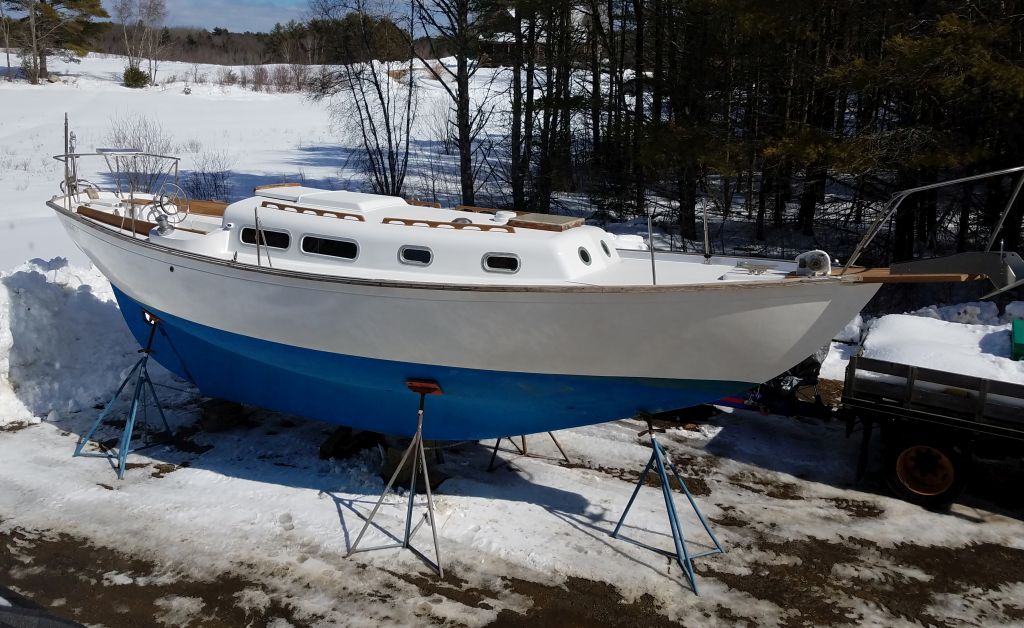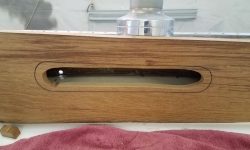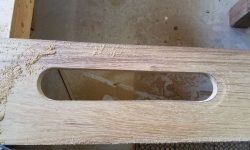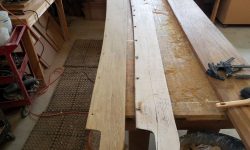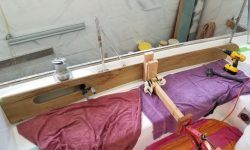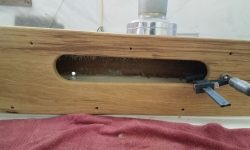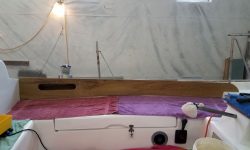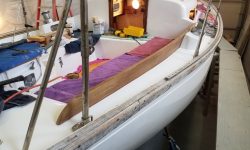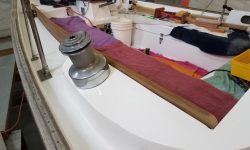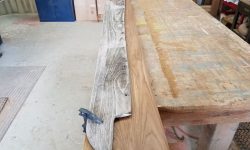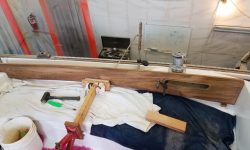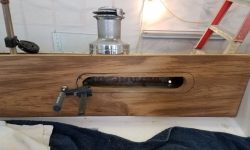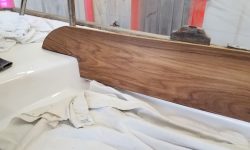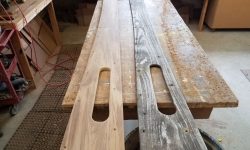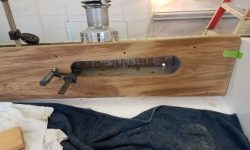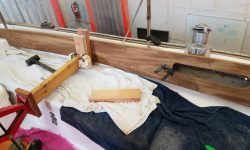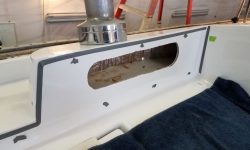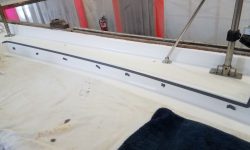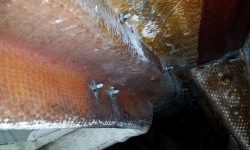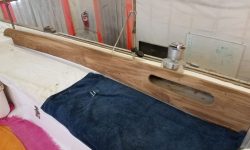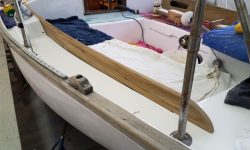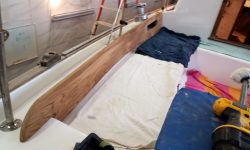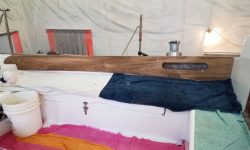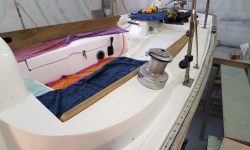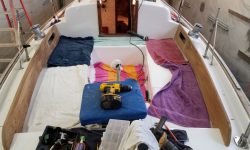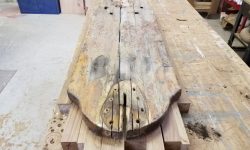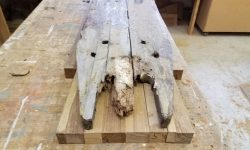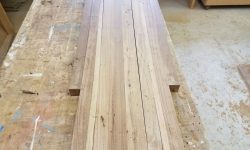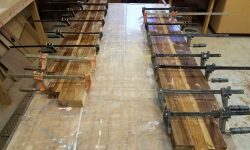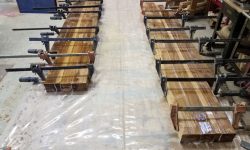February 22, 2018
Jasmine 57
Thursday
I continued where I left off on the starboard cockpit coaming, beginning with removing it from its temporary position in the boat. Down on the bench, I aligned the old coaming over the top of the new blank so I could mark the cutout for the storage pocket in the winch island. Prudence dictated that I start with a smaller hole and another test fit to ensure that the final hole was in the proper position before committing to the final cut. With the coaming pressed back into position on the boat, I reached through my narrow cut and made a few reference marks on the back side of the coaming to indicate the extent of the opening in the fiberglass.
Back on the bench, I compared the maximum size of the raw opening in the winch island to the outline of my patterned cutout and, satisfied that the marks were correct, went ahead and cut out the final opening. This was by design a bit smaller than the opening in the fiberglass, so that the wood hid the rough edge of the opening. Afterwards, I milled 1/4″ roundovers on both edges of the cutout, as well as the applicable edges of the coaming itself, then sanded the coaming clean and smooth. Along the bottom edge and at the top of the winch island, I laid out for the boltholes to secure the coaming and milled the holes and countersinks for the flush, exposed fasteners.
Back in the cockpit, I dry-fit the coaming and held it securely with a clamp in the storage pocket and my coaming jack in the center. With the coaming properly positioned, I drilled a pilot hole through each hole in the coaming and through the fiberglass behind. With the coaming out of the way, I finished off each fastener hole with a 1/4″ tap and small countersink.
Since the coamings were to be left bare, I could proceed with installation immediately. To allow for the coamings’ removal, should it be desired, I chose to use butyl tape sealant along the top edge of the coaming (to prevent the passage of nuisance water from the sidedecks) and in way of the bolt holes. Then, I installed the coaming with 1/4″ flat head machine screws into the tapped holes, and added nuts and washers from behind wherever I could; the minimal clearance for the fasteners against the underside of the moldings limited room in a few places.
Now I repeated the process for the port side. This time, when I laid out the basic coaming shape, I also marked the outline for the storage pocket and made the initial rough cut there, which saved some time. The initial test fit was a success, and I didn’t need to make any modifications to the basic shape of the coaming.
Back on the bench, I finished up the cut for the storage pocket, then milled the rounded edges and sanded smooth the coaming before doing my final dry fit and preparing the fastener holes.
I completed the final installation in the same way, with butyl tape and machine screws.
Next, I turned to the bow platform, and got started by milling up the various teak strips I needed to glue up the platform, essentially replicating the original platform and its construction. Note that the aft end of the platform, shown in the center photo, should be solid material through the center; the shape shown is the result of catastrophic rot that crumbled during removal.
With the blanks prepared, I separated the strips into two halves to begin the lamination. I planned to glue up 5 pieces on each side now, then glue together the two halves in a separate operation, since doing all 10 pieces at once would be too difficult. After cleaning all the teak with acetone, I rolled on a coat of plain epoxy to all the mating surfaces, then returned with thickened epoxy adhesive to do the glue-up and clamp the blanks securely. By the time I took these photos, I’d already squeegeed off much of the epoxy squeezeout from the top surface.
Total time billed on this job today: 7.5 hours
0600 Weather Observation: 33°, mainly cloudy. Forecast for the day: Clouds and sun, around 35°


